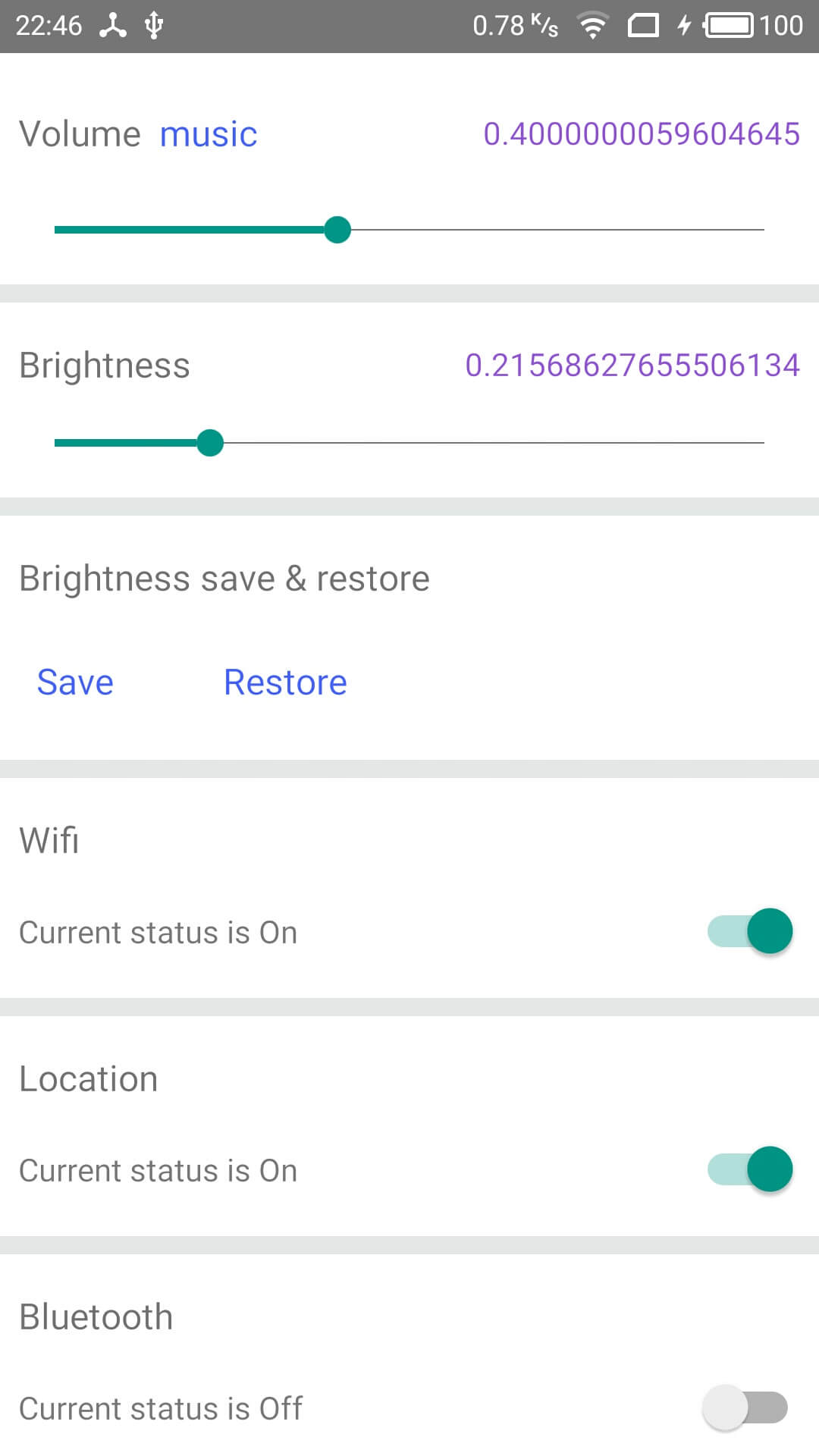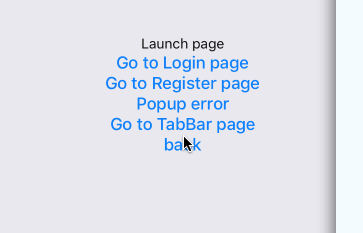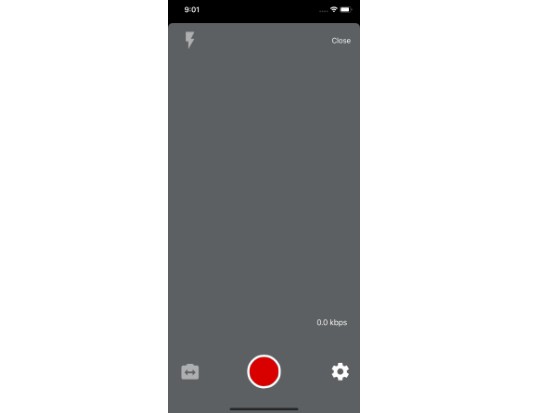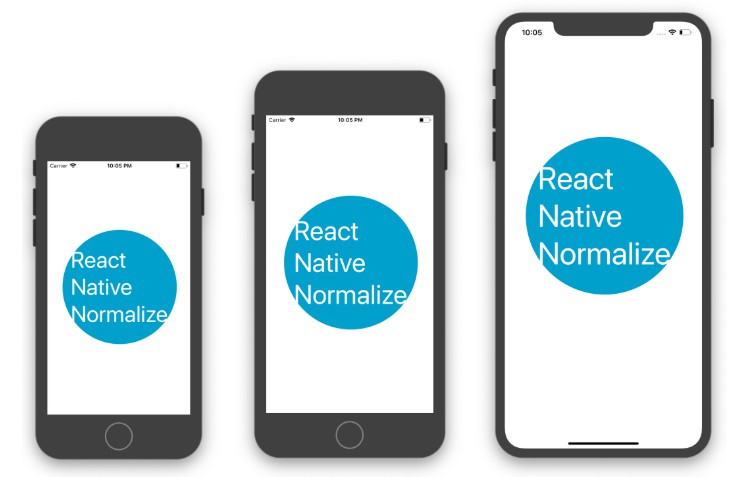react-native-system-setting
It provides some system setting APIs for you. Support iOS and Android both.
Support
- Volume ( with listener)
- Brightness
- Wifi switch
- Location
- Bluetooth
Next
- System info
Look like
I really want to show the .gif, while it has no difference with .jpg for some system limit.
I strongly recommend you to run the example in real device to see how it works.
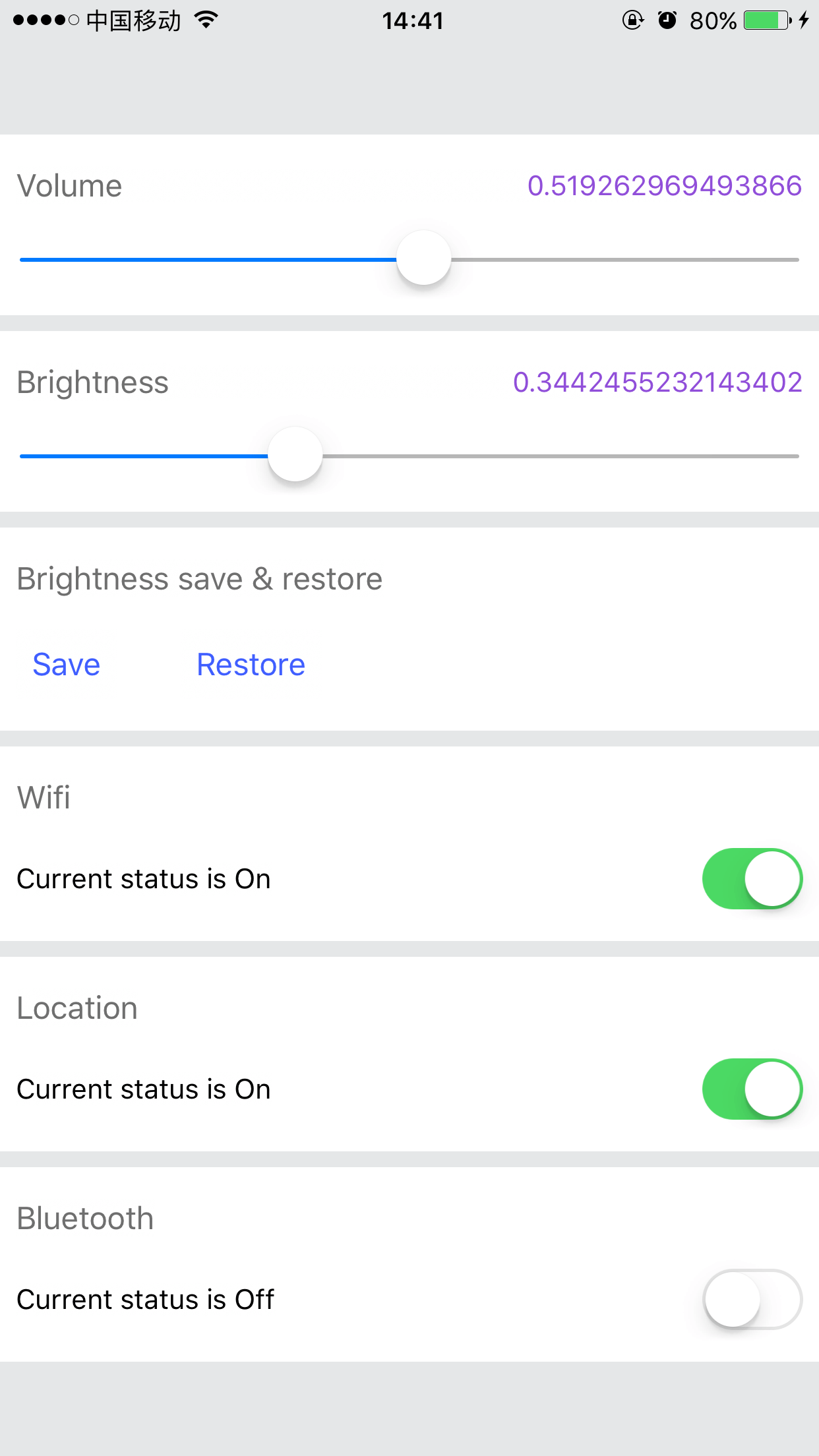
Install
Run npm i -S react-native-system-setting
Note: if your project was created by Create React Native App, you should Eject before link it.
iOS
Run react-native link to link this library.
Or add pod 'RCTSystemSetting', :path => '../node_modules/react-native-system-setting' in Podfile for Cocoapods.
If link does not work, you can do it manually.
Android
Run react-native link to link this library.
That's all.
If link does not work, you can do it manually. Just follow this way:
android/settings.gradle
include ':react-native-system-setting'
project(':react-native-system-setting').projectDir = new File(rootProject.projectDir, '../node_modules/react-native-system-setting/android')
android/app/build.gradle
dependencies {
...
compile project(':react-native-system-setting')
}
MainApplication.java
On top, where imports are:
import com.ninty.system.setting.SystemSettingPackage;
Add the SystemSettingPackage class to your list of exported packages.
@Override
protected List<ReactPackage> getPackages() {
return Arrays.asList(
new MainReactPackage(),
new SystemSettingPackage()
);
}
Usage
Common import
import SystemSetting from 'react-native-system-setting'
volume
//get the current volume
SystemSetting.getVolume().then((volume)=>{
console.log('Current volume is ' + volume);
});
// change the volume
SystemSetting.setVolume(0.5);
// listen the volume changing if you need
const volumeListener = SystemSetting.addVolumeListener((data) => {
const volume = data.value;
console.log(volume);
});
//remove listener when you need it no more
SystemSetting.removeVolumeListener(volumeListener)
setVolumecan do more, more detail
brightness
//get the current brightness
SystemSetting.getBrightness().then((brightness)=>{
console.log('Current brightness is ' + brightness);
});
//change the brightness & check permission
SystemSetting.setBrightnessForce(0.5).then((success)=>{
!success && Alert.alert('Permission Deny', 'You have no permission changing settings',[
{'text': 'Ok', style: 'cancel'},
{'text': 'Open Setting', onPress:()=>SystemSetting.grantWriteSettingPremission()}
])
});
// save the value of brightness and screen mode.
SystemSetting.saveBrightness();
// restore the brightness and screen mode. you can get the old brightness value.
SystemSetting.restoreBrightness().then((oldVal)=>{
//if you need
})
// change app's brightness without any permission.
SystemSetting.setAppBrightness(0.5);
SystemSetting.getAppBrightness().then((brightness)=>{
console.log('Current app brightness is ' + brightness);
})
Wifi
SystemSetting.isWifiEnabled().then((enable)=>{
const state = enable ? 'On' : 'Off';
console.log('Current wifi is ' + state);
})
SystemSetting.switchWifi(()=>{
console.log('switch wifi successfully');
})
Location
SystemSetting.isLocationEnabled().then((enable)=>{
const state = enable ? 'On' : 'Off';
console.log('Current location is ' + state);
})
SystemSetting.switchLocation(()=>{
console.log('switch location successfully');
})
Bluetooth
SystemSetting.isBluetoothEnabled().then((enable)=>{
const state = enable ? 'On' : 'Off';
console.log('Current bluetooth is ' + state);
})
SystemSetting.switchBluetooth(()=>{
console.log('switch bluetooth successfully');
})
Airplane
SystemSetting.isAirplaneEnabled().then((enable)=>{
const state = enable ? 'On' : 'Off';
console.log('Current airplane is ' + state);
})
SystemSetting.switchAirplane(()=>{
console.log('switch airplane successfully');
})
API
Run example
$ cd example/SystemSettingExample
$ npm install
// if android
$ react-native run-android
// else
$ react-native run-ios
Android permission
Remove permission
To simplify using, I have declared all permission in AndroidManifest.xml.
And you can delete the permission safely if it's useless for your app.
You can find the file in yourProject/node_modules/react-native-system-setting/android/src/main/AndroidManifest.xml. (Be sure that you have run npm install)
These permissions are transparent in iOS, so it's ok for iOS app.
Runtime permission for Android 6+
Change brightness and screen mode need android.permission.WRITE_SETTINGS which user can disable it in phone Setting. When you call setScreenMode(), setBrightness() or setBrightnessForce() , it will return false if the app has no permission, and you can call SystemSetting.grantWriteSettingPremission() to guide user to app setting page. see example
If you just want to change app's brightness, you can call
setAppBrightness(val), and it doesn't require any permission. see API
In the end
Feel free to open issue or pull request
